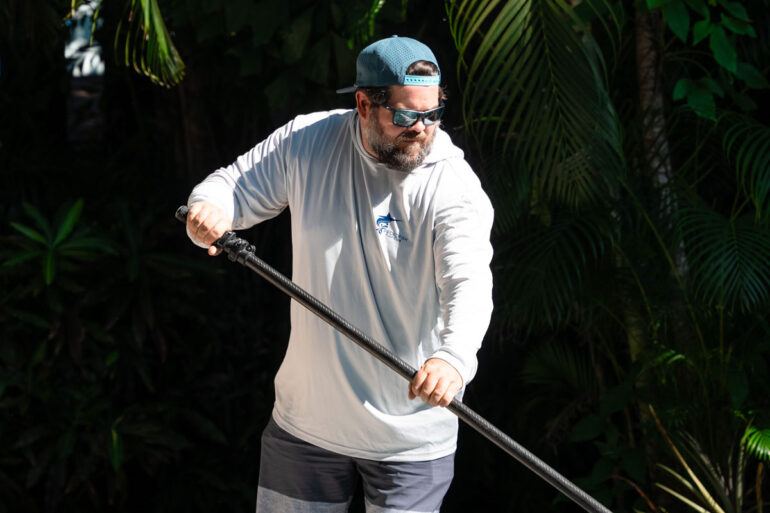Checking and Replacing Drain Covers
Complying with Virginia Graeme Baker requires more than a quick glance

The Virginia Graeme Baker act demands all residential swimming pools to have a proper drain cover to prevent entrapment, but even if the right drain cover appears to be in place, poor care or improper installation can mean an entrapment risk still exists.
Steve Barnes, director of science and compliance for AquaStar Pool Products in Ventura, California, says the No. 1 priority for service technicians is to perform a visual inspection each time they visit to ensure all drain covers are in place with no visible signs of damage, cracks or being loose.
“Missing, broken and damaged drain covers should be treated just like a missing junction box cover with bare wires sticking out,” he says. “Both pose life-threatening dangers to anyone who comes in contact with them.”
When replacing a drain cover, first ensure that the new cover is VGB compliant — and many current residential covers are not. Make sure it has a flow rating adequate for the pump and a sump depth specification shallower than the pool/spa.
Drain covers also have a shelf life, which begins when the cover is installed. This makes it important for you to keep good records of when covers are replaced. The plastic can get brittle over time and chemical abuse can accelerate the decay of the plastic fittings. If a tech notices something broken or sees a hole in it, it must be addressed immediately.
When putting in a new cover, use proper screws and fasteners. If it is stripped, find an adequate way to replace the plastic ring so it has tie between the sump and drain cover.
All Seems Well
Even if it looks like a drain cover is in place, there can still be challenges: Barnes says some drain covers with the correct flow ratings can’t handle the pump’s flow when skimmers are plugged, not available because of low water levels or they are being used for a suction-side cleaner connection point.
“Pool users can’t see how much water is flowing into the drains and have no way of knowing it could tangle hair or hold them against the drain cover if they swim too close,” he says. “This is one of the most important safety checks a pool tech can conduct.”
Service techs should periodically hit the covers with a brush or rake to ensure there’s not a screw loose or something wrong that can’t be seen at first glance.
Since the VGB Pool & Spa Safety Act was passed, suction entrapment incidents continue to happen on drain covers that look VGB compliant. In one instance, Barnes says a larger pump was installed, exceeding the flow rating of the cover, which then entangled a girl’s hair and she had to be rescued. In another, some drain covers were plugged with debris, sending too much water through another and a girl’s hair was tangled — she was saved when her father ripped the drain cover off the spa wall to free her.
Replacement Concerns
When replacing drain covers, a service tech must know the maximum flow potential of the pumping system and then select a replacement with a VGB flow rating that is higher.
“It obviously must be compatible with [how it attaches to] the pool or spa structure and it must be compatible with the opening under the drain cover,” Barnes says. “This is called the sump depth and most drain covers need clearance between the drain cover and the suction pipe opening.”
Three-inch clearance is common and so is a minimum of one-and-a-half times the suction pipe diameter, while other models are rated for zero sump depths and can be used on any sump they fit. “Zero sump drain covers are the best style to carry on service trucks because the tech doesn’t have to make two trips, one to inspect the sump and another to install a compatible cover,” Barnes says. “The bottom line: The service tech must know what the pool needs before going to the distributor so they know what to ask for.”






